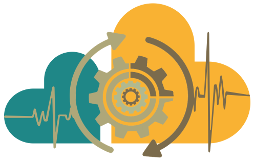Workflows
What is a Workflow?Filters
This is part of a series of workflows to annotate a genome, tagged with TSI-annotation.
These workflows are based on command-line code by Luke Silver, converted into Galaxy Australia workflows.
The workflows can be run in this order:
- Repeat masking
- RNAseq QC and read trimming
- Find transcripts
- Combine transcripts
- Extract transcripts
- Convert formats
- Fgenesh annotation
With this galaxy pipeline you can use Salmonella sp. next generation sequencing results to predict bacterial AMR phenotypes and compare the results against gold standard Salmonella sp. phenotypes obtained from food.
This pipeline is based on the work of the National Food Agency of Canada. Doi: 10.3389/fmicb.2020.00549
JAX NGS Operations Nextflow DSL2 Pipelines
This repository contains production bioinformatic analysis pipelines for a variety of bulk 'omics data analysis. Please see the Wiki documentation associated with this repository for all documentation and available analysis workflows.
Type: Nextflow
Creators: Michael Lloyd, Brian Sanderson, Barry Guglielmo, Sai Lek, Peter Fields, Harshpreet Chandok, Carolyn Paisie, Gabriel Rech, Ardian Ferraj, Anuj Srivastava
Submitter: Michael Lloyd
Complete workflow for TANGO as reported in Lecomte et al (2024), "Revealing the dynamics and mechanisms of bacterial interactions in cheese production with metabolic modelling", Metabolic Eng. 83:24-38 https://doi.org/10.1016/j.ymben.2024.02.014
- Parameters for individual models are obtained by optimization
- Individual dynamics and community dynamics are simulated
- Figures for the manuscript are assembled from the results.
Assembly with Hifi reads and Trio Data
Generate phased assembly based on PacBio Hifi Reads using parental Illumina data for phasing
Inputs
- Hifi long reads [fastq]
- Concatenated Illumina reads : Paternal [fastq]
- Concatenated Illumina reads : Maternal [fastq]
- K-mer database [meryldb]
- Paternal hapmer database [meryldb]
- Maternal hapmer database [meryldb]
- Genome profile summary generated by Genomescope [txt]
- Genome model parameters generated by Genomescope [tabular]
...
Importing single-end multiplexed data (not demultiplexed yet)
Type: Galaxy
Creators: Debjyoti Ghosh, Helmholtz-Zentrum für Umweltforschung - UFZ
Submitter: WorkflowHub Bot
Use DADA2 for sequence quality control. DADA2 is a pipeline for detecting and correcting (where possible) Illumina amplicon sequence data. As implemented in the q2-dada2 plugin, this quality control process will additionally filter any phiX reads (commonly present in marker gene Illumina sequence data) that are identified in the sequencing data, and will filter chimeric sequences.
Type: Galaxy
Creators: Debjyoti Ghosh, Helmholtz-Zentrum für Umweltforschung - UFZ
Submitter: WorkflowHub Bot
This workflow takes as input SR BAM from ChIP-seq. It calls peaks on each replicate and intersect them. In parallel, each BAM is subsetted to smallest number of reads. Peaks are called using all subsets combined. Only peaks called using a combination of all subsets which have summits intersecting the intersection of at least x replicates will be kept.
Racon polish with long reads, x4
 Tests
Tests